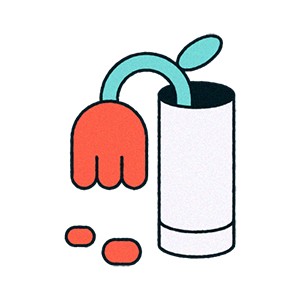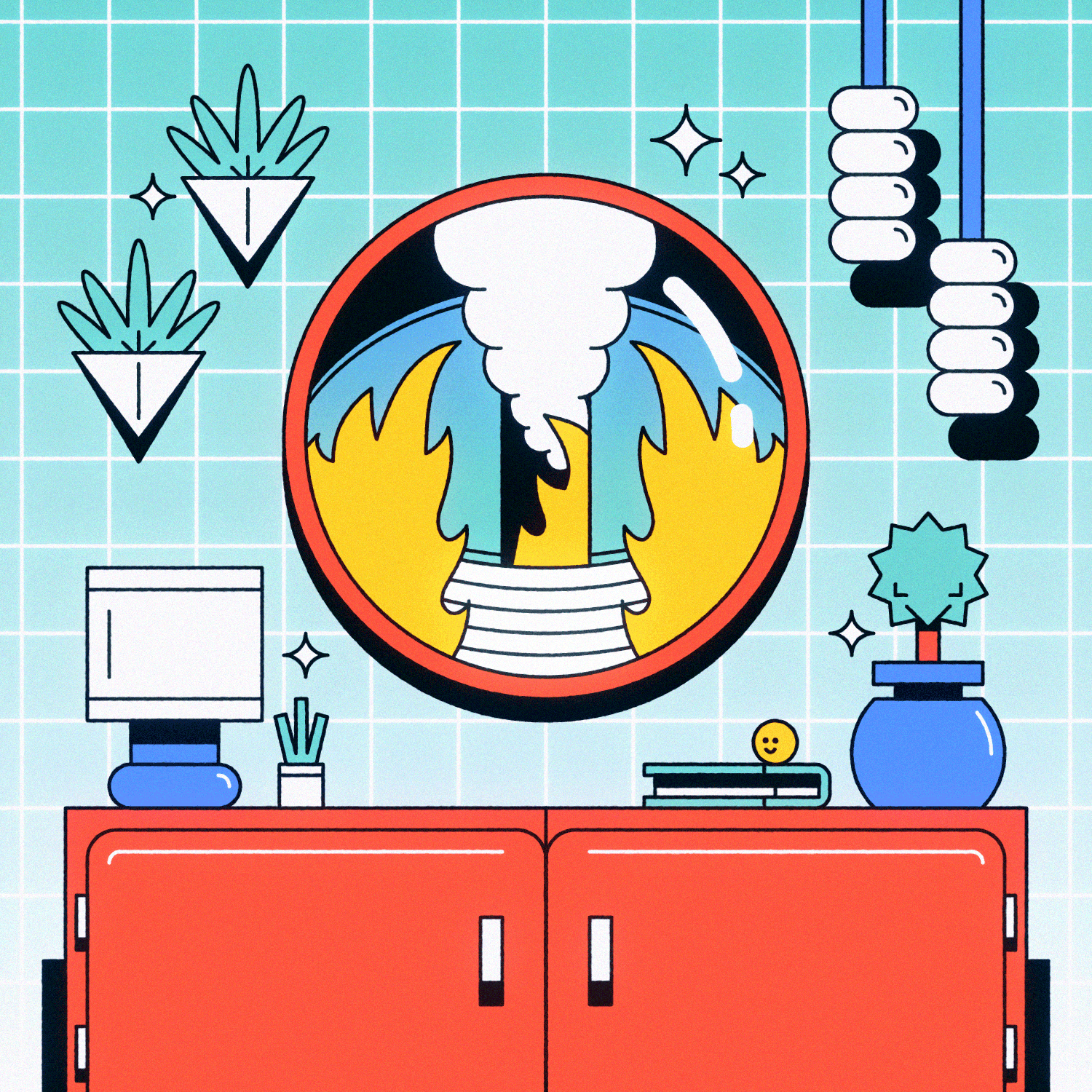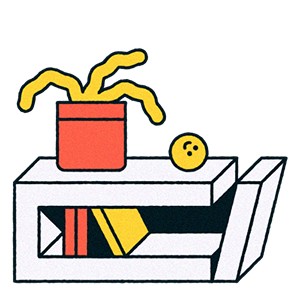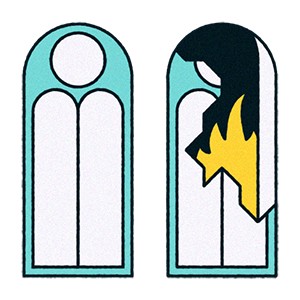 Illustrations: Joel Plosz
Illustrations: Joel Plosz
The untold story of how Homepolish?s extremely Instagrammable house of cards came tumbling down.



But what had more important ramifications for the company?s future was Santos? singular focus on press, with nearly all profits in the early days going to marketing. That?s not unusual in a startup, but at Homepolish it happened, ex-employees say, at the expense of building out the company?s infrastructure. It?s unclear how much of Santos? focus on PR ? and his success getting interviews ? can be attributed to his then-boyfriend (now-husband) Ross Matsubara, vice president and style director of luxury brand marketing firm Nike Communications. (In 2012, Matsubara, who I don?t know personally, sent me an email pitching me a story about Santos, when the company was two months old and had ?70 clients on the waiting list.?) But Matsubara was a regular and commanding presence in the Homepolish office, and Homepolish parties were often stocked with the premium liquor brands he represented.
Even as Homepolish was buying a full-page color New York Times ad ? some $150,000, before you add the color ? its wait times for furniture quotes were up to two weeks, an eternity in a world where clients are used to pushing a button and having something delivered. Designers say there was no way for them to check orders; there was no direct office contact to call, and follow-ups had to be done by email. Problems with orders abounded, say multiple designers, including furniture orders that simply didn?t get placed and items that showed up at the wrong address. The entire system, says former Homepolish designer Erica Riha, ?gave me nightmares.?
?These guys have been growing 100% year over year, they?re profitable, their growth has been nearly 100% organic, and customers love them,? Hunt told Forbes at the time.
Meanwhile, Santos got very into the weeds of anything marketing-related. The marketing team often was caught between his lofty vision and what they knew the company could realistically deliver. ?There was a lot of couching what we could say we could do versus what was actually feasible,? says one former employee. A 2014 version of the website said that Homepolish had ?a network of vetted contractors? that were screened ?for quality, hustle, and dependability.? This disappeared in later versions to say that designers were happy to recommend a contractor, but that all contractors were third party and Homepolish couldn?t ?guarantee their work.? (Ex-staffers from multiple departments say there were often clashes about Santos? overpromising; three designers and two employees independently referred to both his promises and the company as ?smoke and mirrors.?)
Still, employees hoped the kinks would work themselves out. Many had backgrounds in design and believed strongly in the company?s ?design for all? ethos. ?It was one of those communities you responded to because of how excited everyone was,? says an early former employee. Adds a second one, wistfully: ?It was like magic.?


 Homepolish CEO Noa Santos. Photo: Mark Sagliocco/Stringer/Getty Images
Homepolish CEO Noa Santos. Photo: Mark Sagliocco/Stringer/Getty Images
At the time, the company was an industry darling. ?Game changer,? wrote the influential design blog Design Sponge. ?Rad and disruptive,? said Goop. The staff at Details magazine wrote of their ?obsession? with stalking the Homepolish website to see photos of the best company offices. Clients were pouring in faster than Homepolish could handle, and the long waitlist was ruining the company?s Yelp rating. Santos wanted more designers across the U.S., and fast. ?We just need bodies,? he told employees, vowing that there would never be a waitlist again. This was one of the increasingly rare times employees pushed back against Santos, with at least three of the company?s senior managers warning him that quality and service would suffer. ?There were a lot of people telling him to be careful,? says one ex-staffer.
Undeterred, Santos nearly doubled the number of designers from about 300 to 500. In the process, the vetting of designers ? which previously involved having them design sample rooms with limited time and budget ? was relaxed. A customer service manager noted an uptick in complaints from both clients and designers, the latter of whom grumbled about not getting enough work.
The founders could be ?intimidating and scary? to the young employees who worked for them, says an early former employee. Santos frequently raised his voice and ?would openly threaten people, saying, ?If you don?t do this, we can replace all of you.??
It didn?t help that Santos seemed to constantly change how he felt about the designers? place at the company ? whether they were just workhorses in service of the client, or whether Homepolish?s mission was to be an agency that supported and promoted them. His flip-flopping put the company organizational structure in perpetual flux, with people being reassigned to jobs with little notice. ?It was kind of whiplash-y,? says one former employee. When designers left to pursue their own businesses, he treated it like disloyalty.
By the beginning of 2017, there were already signs Homepolish was not performing as expected. On Valentine?s Day, around 15 people (about 15% of the company) were summoned to meetings at restaurants and coffee shops near the office and fired. Some were specifically told it was because they ?weren?t contributing to the profits of the company.? Among those culled were four of the most senior, longest-term employees ? ones who sometimes disagreed with Santos. Soon, not a single staffer from the early days remained.



The timing couldn?t have been worse: Santos had just revealed at one of the increasingly rare all-hands meetings that if Homepolish didn?t get more funding, it wouldn?t get a bridge loan from the original investors. At this point, it seemed unlikely Santos could pay off Mommy Shorts even if he wanted to. Meanwhile, staffers were getting spooked that the company?s initial investors might be wiping their hands clean of the company.
By July 22, most employees had gone a full month without pay ? meanwhile, Santos? husband Instagrammed a photo: A six-bedroom, $1.6 million home the couple had just bought in East Hampton, complete with two ponds, a tennis court, and a Jacuzzi.
But Santos still seemed to believe he could pull off a miracle. Homepolish continued its quest for wealthy clients, offering complimentary consultations on the patio of Goop?s Sag Harbor shop. Santos was still trying to make things work with Modsy, but the deal fell through. (When asked to confirm talks with Homepolish, a Modsy spokeswoman emailed: ?We discussed a strategic partnership from very early on until the close of their business that considered our different but complementary offerings for customers. Unfortunately the partnership did not pan out.?)
As Santos continued to grasp for a solution, he scheduled a mandatory Skype call with the more than 500 designers. They would be ranked according to how much they sold through the company?s centralized buying platform, he told them, and the rank would affect who got first pick of new clients, according to multiple designers who were on the call. Among employees, anxious messages about the company?s fate flew back and forth on personal group texts and Whatsapps. Absent information, employees snooped on Google calendars, attempting to find clues on who was meeting with whom.


 The company?s unraveling, which was reported by New York magazine, left dozens of designers reeling. At least two were owed more than $30,000, potentially life-altering sums for freelancers. Some designers had to spend the months after the company?s collapse finishing projects for which they?d never receive payment, in hopes of at least salvaging a good reference from the experience. One designer had planned to take some personal time off to start a family. Instead, she spent it scrambling for work.
The company?s unraveling, which was reported by New York magazine, left dozens of designers reeling. At least two were owed more than $30,000, potentially life-altering sums for freelancers. Some designers had to spend the months after the company?s collapse finishing projects for which they?d never receive payment, in hopes of at least salvaging a good reference from the experience. One designer had planned to take some personal time off to start a family. Instead, she spent it scrambling for work.
Many are furious that by the time Santos told them what was happening, it was too late for them to get paid. ?It felt like he was cutting his losses and the bank?s losses,? says one. ?But what it amounts to is stealing from us.? They noted, with displeasure, his posts on Instagram from a luxury trip to Morocco the week of Thanksgiving.
Most employees and designers acknowledge the pressure Santos was under from investors, but still blame him for polluting the company culture ? and for the company?s failure. ?Noa single-handedly sunk that ship,? says a long-term employee who left in 2017, but is still angry about what happened to the startup where she invested years of her life. ?There were people who got the company to what it was, when it was having its hot moment, and could have taken that company to be something greater. He is the reason that those people weren?t there anymore.?
?As a founder you feel trapped. The box around you is getting smaller and smaller, and you have nowhere to move.?
The board likely shares half of the blame, speculates Steve Blank, an adjunct professor of entrepreneurship at Stanford University. ?Where were they?? he asks. ?It seems like a toxic combination of a board not paying attention and a first-time founder in crisis.? (Board members Hunt and Hyman did not reply to requests for comment.)
?As a founder you feel trapped,? says Blank, recalling his own experience as the founder of Rocket Science Games, a startup that failed after raising $35 million and landing Blank on the cover of Wired. ?The box around you is getting smaller and smaller, and you have nowhere to move. And you?re in denial.?
Meanwhile, the workers of Homepolish have begun moving on. 11 of the company?s former designers are even hoping to fill the void with their own startup: Interior Collab, an online tool that will connect clients and designers. The founders are currently applying for nonprofit status. ?It really became clear that we were a commodity to be leveraged for someone?s personal gain,? says Claire Hung, a founder. ?We just want to try to create a space where that risk is eliminated for design businesses of all sizes and stages.?
Santos, though, still hasn?t given up on Homepolish. A source who spoke with him recently says he was just in Los Angeles, talking to a potential partner about selling what?s left of the Homepolish brand and turning it into a subscription service, where clients and designers would pay to be matched. He?s also back to doing what even his detractors say he does beautifully: design. On January 21, he posted to his personal Instagram a spare, beautiful image of a floating desk built into an enormous window overlooking the ocean. ?Design for a client?s workspace,? he wrote, adding that he always did his best thinking in nature. ?For all my obsessive planning, preparing and orchestrating, life unfolds as it will,? he wrote. ?Almost entirely out of my control.?
Update: An earlier version of this piece misstated Andy Dunn?s involvement with Homepolish. He was not an investor or board member.


